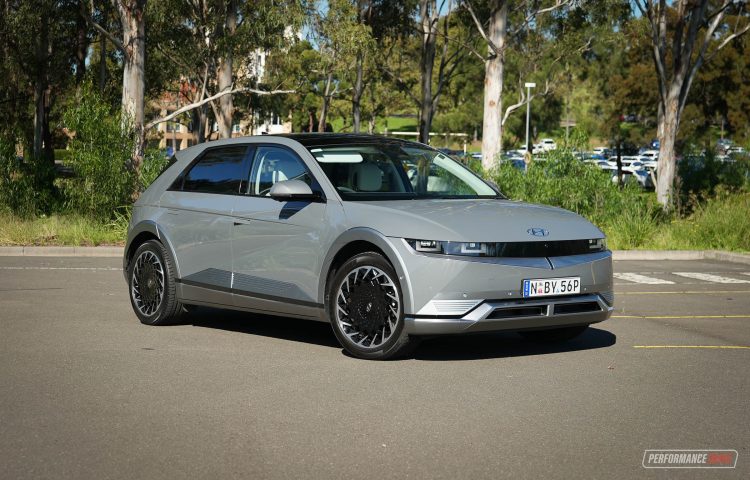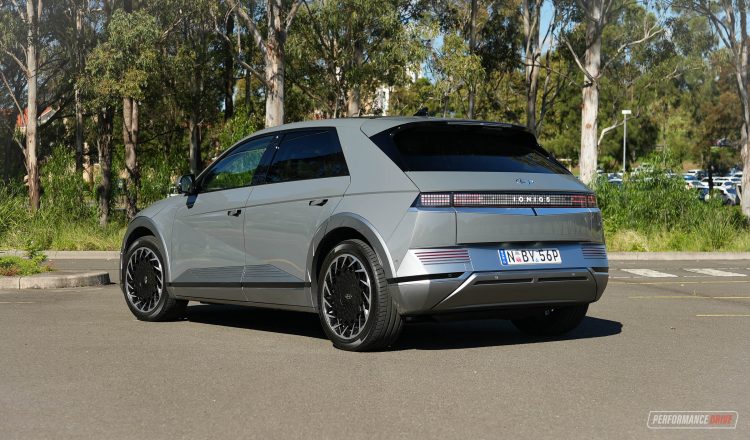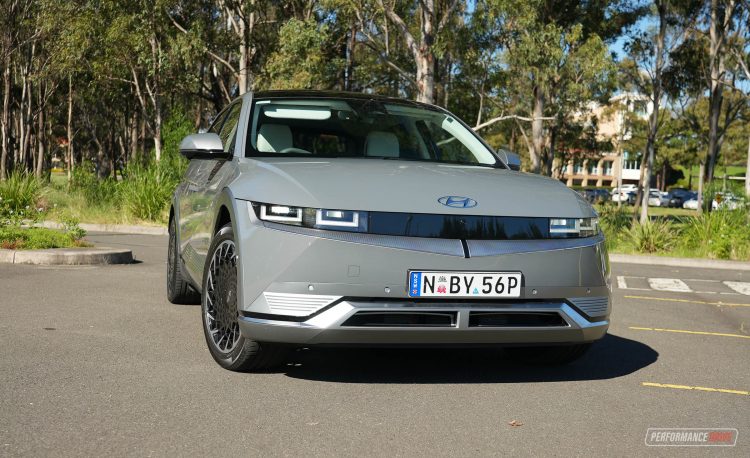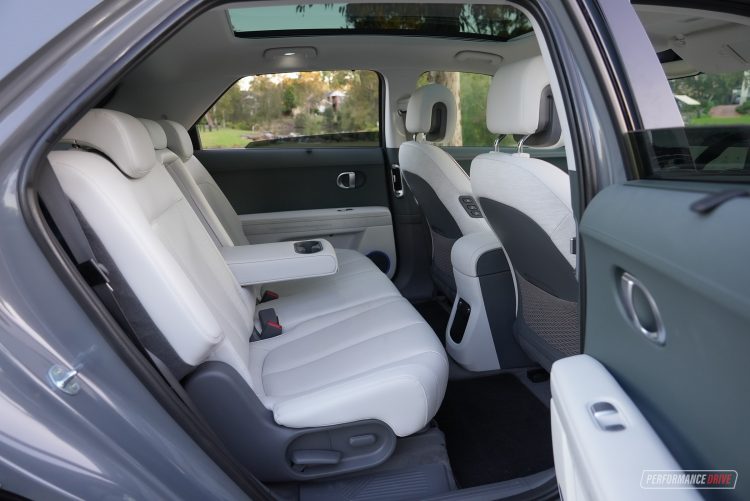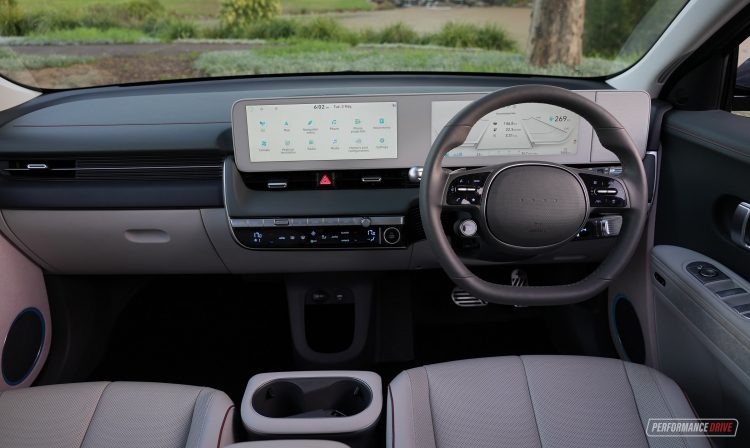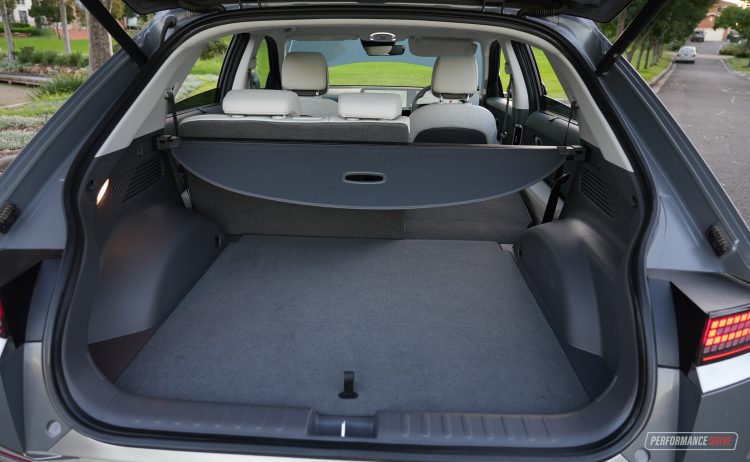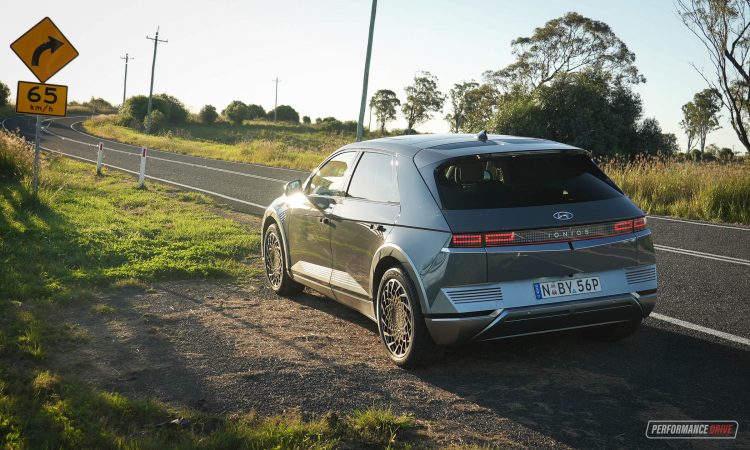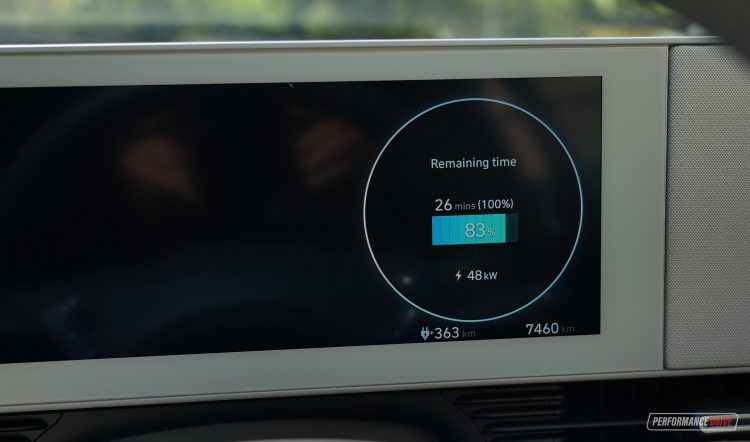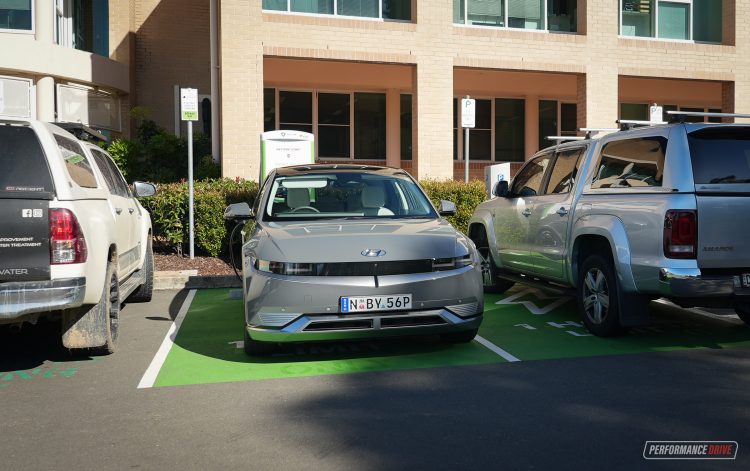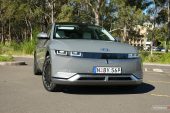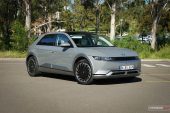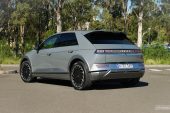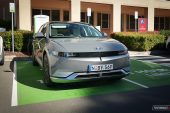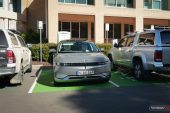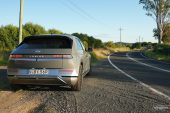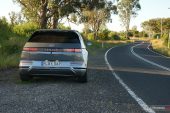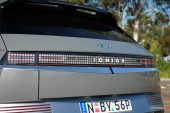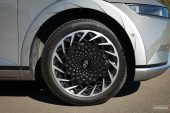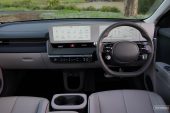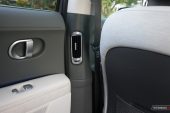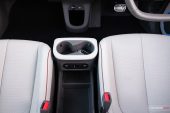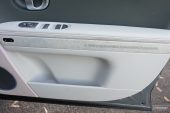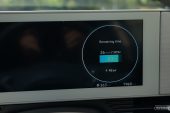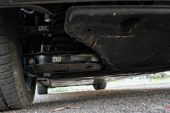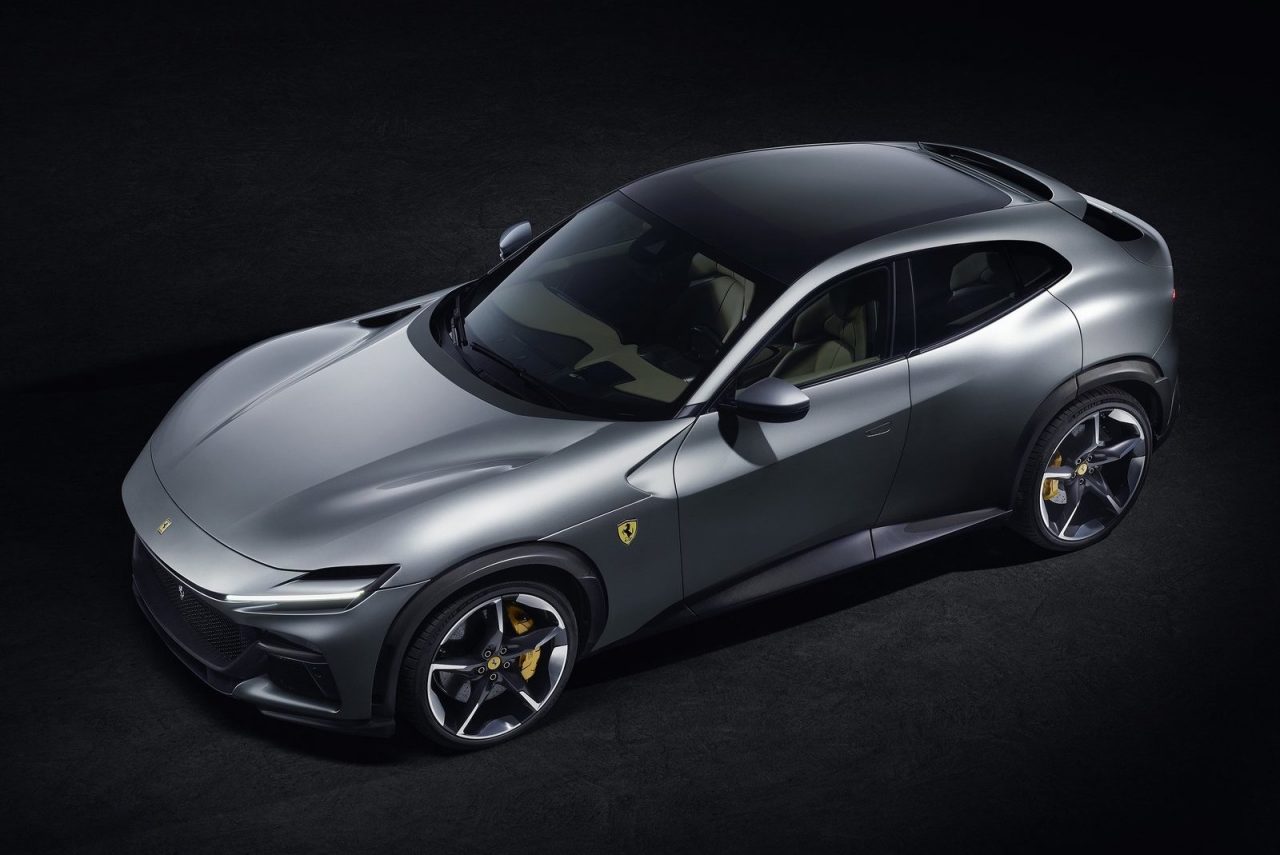As electric vehicle technology continues to advance and grow in popularity, so does the EV lineup. The Hyundai IONIQ name was first launched as a hybrid and all-electric model in 2019. Now, IONIQ has turned into its own sub-brand – one that will eventually mother many EV-only models. First off the rank is the IONIQ 5 all-electric mid-sized SUV.
First hitting Aussie streets in the second half of 2021, sales of the IONIQ 5 have been stronger than expected. Limited numbers have been allocated to Australia so that Hyundai can give every corner of the globe a chance. It has been available in rear-wheel drive (single motor) and all-wheel drive (twin motor) forms, in a single trim only. Prices start from $71,900 for the RWD, and rise to $75,900 for the AWD (excluding on-road costs).
The second half of 2022 sees trim levels expanded with a base Dynamiq variant for the 2WD model, and a top-spec Techniq for the AWD variant. Just prior to the release of these new variants, we took the IONIQ 5 RWD for a whirl.
For the new Dynamiq, prices have been reduced to $69,900, but rise to $77,500 for the AWD Techniq.
2022 Hyundai IONIQ 5 RWD – THE SPECS
[column width=”47%” padding=”6%”]Electric system: 72.6kWh, 653V lithium-ion battery
Output: 160kW / 350Nm
Transmission: Single-speed auto
Drive type: Rear-wheel drive
Wheels: F: 20×8.5, 255/45
ANCAP: Five stars
Tare weight: 2020kg
Power-to-weight: 12.62:1 (kg:kW)
Recharging: DC 350kW, AC 10.5kW
Range: 451km[/column] [column width=”47%” padding=”0″]0-60km/h: 3.74 seconds*
0-100km/h: 7.36 seconds*
60-110km/h: 4.69 seconds*
1/4 mile: 15.53 seconds at 149.4km/h*
Max acceleration: 0.803g
100-0km/h braking: 2.91 seconds at 36.81 metres*
Max deceleration: -1.353g
Decibel at idle: 23*
Peak decibel at 60-100km/h: 67*
Priced from: $71,900[/column][end_columns]
* Figures as tested by PerformanceDrive on the day. Factory claims may be different
2022 Hyundai IONIQ 5 RWD – THE PACKAGE
In the past, electric vehicles have been made the ugly ducklings in the industry, as aerodynamics were more important than appearance. A few EV generations down the track and the IONIQ 5’s external design is a real head-turner. It exudes a totally unique and futuristic look.
The front end has a striking, sharp look with a prominent bonnet line and a long black headlight unit that houses square 3D-look LED lights. Completely flush ‘invisible’ door handles, smooth sheet metal, and sharp creases create strident shadows and give the IONIQ 5 a space-age appearance.
The rear also houses one long taillamp unit with LED lights that mirror the square shape of the front lights. Truly unique with its dotted pattern. The overall silhouette shape could be mistaken as a large hatch thanks to tucked up wheels, a low 160mm ground clearance, and a sloped rear end. But it is classified in the SUV category.
On the inside, it’s a fresh, minimalist approach. There are lots of flat, plain areas with no patterns or buttons. Though, the materials are mostly plasticky and hard. The bareness is broken up a little with a dual coloured white and grey colour scheme.
All the flashy and futuristic focus is left to the job of two huge 12.3-inch digital displays that control nearly everything – one as the centre touch-screen and one as the digital instrument cluster. They look crisp and bright with a high-resolution layout. Using the menu is kept simple and intuitive to navigate.
A lack of buttons and leavers makes way for huge amounts of space for passengers and storage. In fact, it’s more space than you know what to do with. The front centre console is almost non-existent – a bit weird to experience at first, as you need to reach for your belongings all the way down to the floor.
Front and rear passengers have loads of hip, leg, and head room. It can easily accommodate five passengers comfortably. The boot is also generous, swallowing 593 litres of luggage (560 litres in the AWD). And you get a bonus 57 litres under the bonnet thanks to the lack of an engine (24L in the AWD).
Nothing is left out of the IONIQ 5 in the way of equipment. The most significant safety technologies under the IONIQ 5’s ‘SmartSense’ safety suite comprise of forward and reverse collision-avoidance assist with car, pedestrian and cyclist detection, junction turning and crossing alert, lane change (oncoming and side) steering assist, blind-spot assist with view monitor, leading vehicle departure alert, auto high beam, lane keeping aid, front and rear parking sensors, rear cross-traffic alert, safe exit assist, adaptive cruise control, and 3D surround cameras.
You also receive a superb eight-speaker Bose sound system with Android Auto, Apple CarPlay and virtual engine sound, dual-zone climate control with auto defog, heated and ventilated front seats, heated rear seats, a heated steering wheel, powered door handles and tailgate, a powered rear sunshade, rear door sunshades, leather 12-way powered front seats with a ‘zero gravity’ relaxation function, two-way power reclining rear seats, and remote start, and park assist to name a few.
The IONIQ 5 comes with the now industry average, five-year, unlimited kilometre warranty. Servicing is required every 15,000km or 12 months. Notably, servicing costs are stated up front. The first five services cost $220, except for the fourth service – it will set you back $804.
2022 Hyundai IONIQ 5 RWD – THE DRIVE
Now for the important part. As with all EVs, the delivery of power feels unique. You get a more instantaneous surge than conventional engines offer. It also makes acceleration feel like less work for the car as you don’t hear an engine powering up. When full throttle is demanded, your head pushes back into the seats with all that instant torque.
With 160kW and 350Nm instantly accessible, the IONIQ 5 never feels breathless. The 0-100km/h sprint is officially timed at 7.4 seconds, which is slower than the outputs suggest, and slower than most other EVs currently on the market. Our test timed it in 7.36 seconds. If power is important to you, the AWD model significantly decreases the sprint to an impressive 5.2 seconds. There’s also an N high-performance version on the way.
Built-in is Hyundai’s one-pedal drive function called ‘i-Pedal’. This is where energy regeneration occurs as soon as there is no acceleration input from the driver. In other words, the lack of accelerator push causes the car to brake and slow down, so minimal use of the brake pedal is required. There are three different strengths of this sensation to choose from, adjustable by the paddle shifters. It might sound complicated, but it is simple to use and quick to get used to.
In terms of getting the IONIQ 5 charged up, the 72.6 kWh lithium-ion polymer batteries can be plugged into a DC 350kW, 400V and 800V ultra-fast charger that uses a CCS Combo2 plug. At 350kW it takes only 17 minutes to charge from 10 to 80 percent charge. Otherwise, more common 50kW chargers will take about 56 minutes to charge the same amount.
Of course, AC household chargers work too – up to 10.5kW, taking about six hours to charge from 10 to 80 per cent, or over 50 hours if you just use the standard wall plug – all figures are based on the WLTP test. Also new for the IONIQ 5 is the ‘Vehicle-to-Load’ (V2L) function, which offers the capability of charging electric devices, such as scooters, electric bicycles, camping equipment, or even another electric vehicle, with up to 3.6kW of power.
So, what do all these figures translate to on the road? Well, expect to travel about 451km on a charge. With the recent introduction of the ‘Dynamiq’ variant, the range has been increased to 481km. We found the range varies substantially depending on your type of trip.
If you’re travelling on the freeway most of the time, expect the range to drop. It much prefers to zip around the suburbs so it gets a chance to charge from braking energy. In our testing, the bliss point seems to be when travelling between 50km/h and 80km/h. The IONIQ 5’s accuracy to estimate the remaining range has improved, and it gives a more informative worst- and best-case scenario of distance remaining.
Like with all EVs in Australia at the moment, the biggest setback for the IONIQ 5 is the lack of, availability of, and reliability of charging stations in Australia. If you do not have your own charging station or live in an apartment complex, you will need to tirelessly plan your life around keeping your car charged. Like we did, you will likely experience queues at stations, stations that are ‘out of order’, and even ICE vehicles parked in EV spots (as pictured above). Not ideal for busy lifestyles. Until the EV infrastructure improves, or you have your own installed, only a small portion of drivers with specific lifestyles and proximities to public charging stations could experience the full benefits of owning an EV like the IONIQ 5.
After getting comfortable with the IONQ 5 behind the wheel, you quickly notice it’s not at all an outlandish car to drive. It is creepily quiet, and the steering is weighty and gradual enough to feel solid on the freeway. But not too much to make tight parking a hassle. Even though the IONIQ 5 did not receive the localised suspension tuning like other Hyundai’s do, it feels composed during rapid cornering. Only bigger bumps shake up its tracking a tad more than we were expecting. But the 2000kg weight doesn’t help matters.
2022 Hyundai IONIQ 5 RWD – THE VIDEO
2022 Hyundai IONIQ 5 RWD – THE VERDICT
The IONIQ 5 shows us how mature the EV market is becoming. It is a very useable SUV that offers a complete alternative to fossil fuels – provided you have your own reliable plan to keep it charged until the local EV infrastructure catches up. All the while providing a bold and futuristic styling alternative. There are cheaper and faster EVs out there that offer longer driving ranges, but the courage and designs coming out of the South Korean brand is unique.
[column width=”47%” padding=”6%”]PROS:
– Bold external design and quality workmanship
– Liveable travelling range with accurate remaining kilometres
– Ultra-fast charging capability, 350kW
– Outstanding amount of space in the cabin, dual high-quality displays look spectacular[/column] [column width=”47%” padding=”0″]CONS:
– Significantly higher price compared with petrol/diesel equivalent
– The current EV infrastructure in Australia holds the IONIQ back
– Potentially a long wait time to get one
– Some hard, cheap plasticky areas inside[/column][end_columns]
As always, if you’re thinking about buying a new car don’t forget to click here to speak with our car buying specialists.
